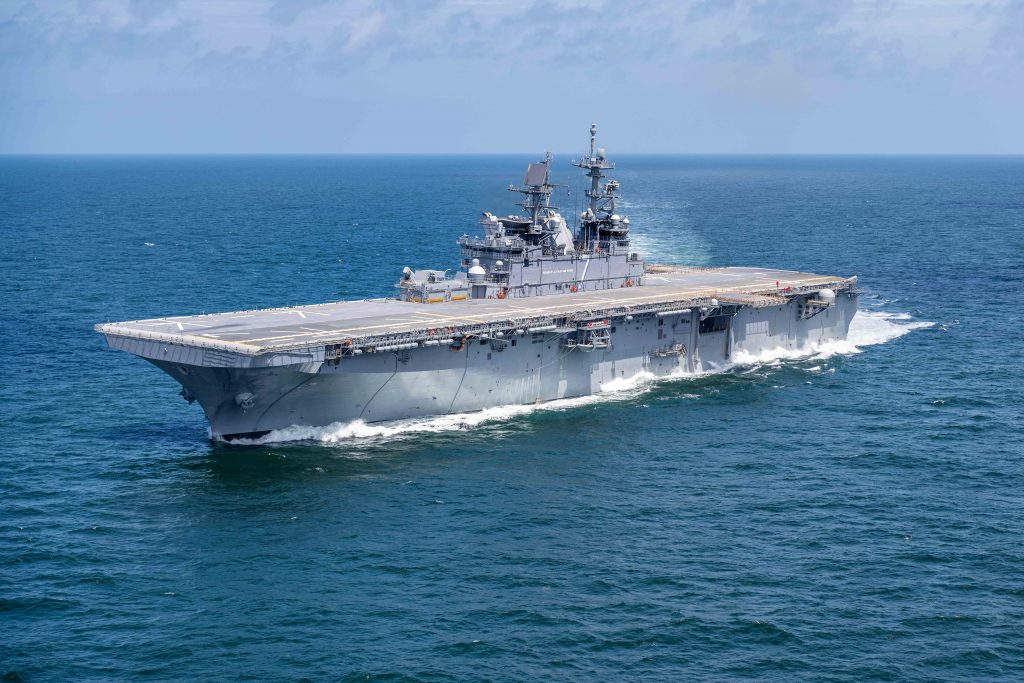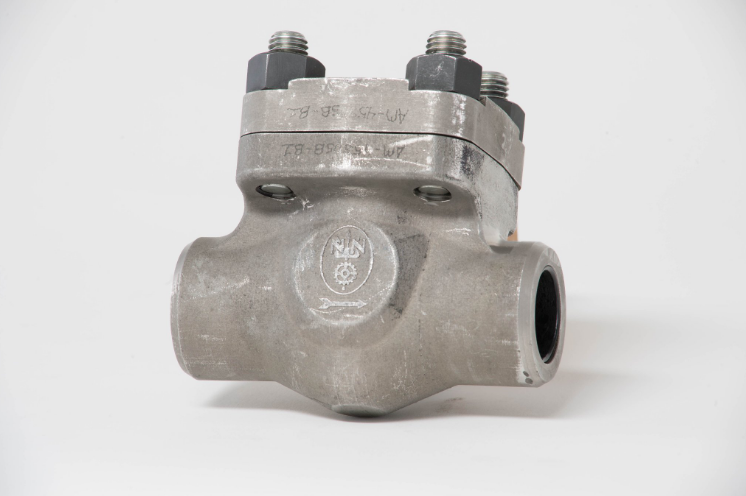U.S. 3D printer OEM 3D Systems is working with military shipbuilding firm Huntington Ingalls Industries to develop new corrosion-proof metal powders for maritime 3D printing applications.
Working with Huntington Ingalls Industries Newport News Shipbuilding division, 3D Systems is formulating novel Copper-Nickel (CuNi) and Nickel-Copper (NiCu) alloys, that are specifically designed to yield robust, temperature-resistant parts. By 3D printing these new materials instead of using conventional casting, Newport believes that it’ll be able to create seaworthy valves, housings, and brackets at reduced lead times of up to 75%.
“Customer-centric innovation has been a driving force for 3D Systems since its founding,” said Chuck Hull, CTO of 3D Systems. “Through our ongoing collaboration with Newport News Shipbuilding, we have yet another opportunity to bring to bear our deep materials science and application engineering expertise, allowing our customers to maximize the power of AM within their organization.”
“These new materials have the potential to redefine Newport News Shipbuilding’s innovation pipeline enabling them to more efficiently deliver high-quality parts.”

3D Systems’ nautical expertise
As part of its material R&D process, 3D Systems often partners with clients to help them qualify 3D printing powders for novel temperature and strength-intensive applications. For instance, just last year, the firm 3D printed titanium cool-bars for the Large Hadron Collider, and it’s working with the U.S. Army Research Laboratory (ARL) on multiple projects, including the “world’s largest” metal 3D printer.
Since 2018, 3D Systems has also collaborated closely with Newport to integrate 3D printing into the production of its naval warships. At first, the Huntington subsidiary installed a ProX DMP 320 system, finding that it yielded highly-accurate parts with reduced waste and costs, but it quickly identified the need to develop customized alloys, designed specifically to cater for the demands of maritime applications.
Consequently, the companies have recently ramped up their research, by investigating how the corrosion resistance of naval parts can be improved when exposed to seawater. After initial experiments in 2019, the companies developed a ‘design guide’ for the Direct Metal Printing (DMP) of nickel alloys, with the potential to yield both robust components, and substantial shipbuilding cost savings.
Having successfully developed more durable nickel 3D printed parts, 3D Systems is now effectively attempting to achieve the same feat with other maritime alloys. Significantly, given that Newport remains the sole builder of the U.S. Navy’s aircraft carriers, the companies’ continued collaboration could also precede a more substantial naval roll-out of the technology in years to come.

A maritime 3D printing powder
Within its latest Newport collaboration, 3D Systems is specifically attempting to qualify CuNi and NiCu powders for use with Laser Powder Bed Fusion (LPBF) systems. Although such alloys are known to possess high levels of corrosion and impact-resistance, they can currently only be produced via casting, often requiring lead times of up to 12 months and contributions from multiple suppliers.
By contrast, developing 3D printable replacements could now allow the Huntington subsidiary to expedite its production of certain parts by up to 75%, while reducing its supply chain dependence. To help Huntington achieve this, 3D Systems is therefore working with Newport to identify the optimal alloy composition and processing parameters, for producing robust end-use shipbuilding components.
Once ready, the novel materials will be 3D printed into prototypes and tested based on their tensile strength, a quality that could prove vital to their end-use efficacy. Moving forwards, the project primarily aims to help Newport replace traditionally-casted parts, but 3D Systems also intends to market the resulting powders, to better meet the needs of its clients in the oil, gas and energy sectors.
“We’re excited to continue our partnership with 3D Systems on these important shipbuilding alloys,” concluded Dave Bolcar, VP of Engineering and Design for Newport. “We’re looking forward to expanding on these efforts by developing parameters that will allow us to further expand the use of AM into our platforms, in order to improve both product quality, schedule, and performance for the fleet.”
3D printed parts-at-sea
Huntington isn’t the only naval manufacturer that’s 3D printing sea-capable components, and a number of national naval forces have also adopted the technology in recent months.
The U.S. Navy’s Naval Sea Systems Command (NAVSEA), for instance, has funded seven nautical programs that, if successful, could yield cost savings of over $250 million. At an initial cost of just $8.2 million, the part optimization initiatives potentially allow the U.S. Navy to cut its spending on carrier and ship maintenance.
Elsewhere, the Dutch Navy has installed INTAMSYS 3D printers onboard some of its frigate ships, as a means of improving its on-demand spare part manufacturing capabilities. The systems have been fitted to shipping containers to create ‘modular printing hubs,’ that can reportedly be transported and set-up within an hour.
On a similar note, the French Navy recently contracted the Naval Group to 3D print an entire propeller for one of its ships. Composed of five individual 200kg blades, the large-format part is reportedly the biggest thruster of its kind in the world, and it has since passed a succession of trials by sea.
To stay up to date with the latest 3D printing news, don’t forget to subscribe to the 3DPrinting Industry newsletter or follow us on Twitter or liking our page on Facebook.
Are you looking for a job in the additive manufacturing industry? Visit 3D Printing Jobs for a selection of roles in the industry.
Featured image shows an aircraft carrier produced by Newport News Shipbuilding for the U.S. Navy. Photo via Huntington Ingalls Industries.


